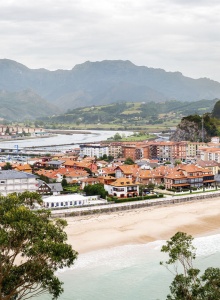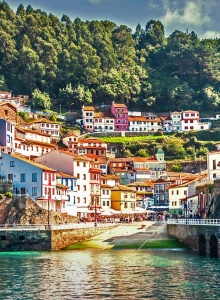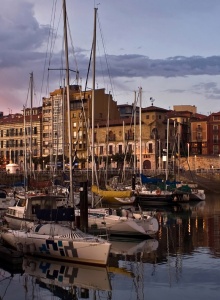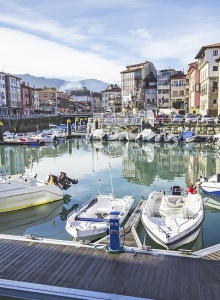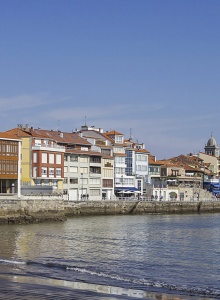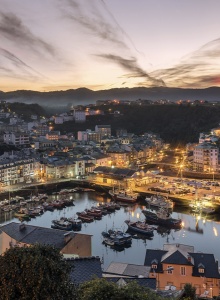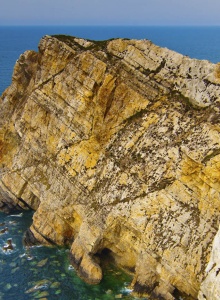The Cantabrian Sea bathes the Asturian coast for 350 kilometres, where the meadows and cliffs practically merge with the water.
A unique view where nature, sea and fishing villages paint an idyllic picture that lovers of sport, the beach or good food will thoroughly enjoy.
A journey along the coast
Bordered by the greenery of its meadows, the Asturian coast pairs its intense blues and golden sands with a natural mantle that will fascinate any traveller. A landscape made up of charming seaside villas and beaches awaits you there. Yellow, red and blue are interspersed with the white of the houses of these fishing villages. Cudillero, Llanes, Luarca, Candás and Luanco welcome you to an atmosphere where the sea is the main feature. Walking along the promenades of these villages is always a good way to take in the beauty of the Cantabrian Sea. If you prefer something more active, in Asturias you will find the ideal destination for water sports. Get your surfboard ready because the beaches of Tapia de Casariego, Gozón and Salinas are all perfect for “galloping” on the waves.
It’s worth getting up early to see how the fishing boats get to port. This is where the drop the catch of the day in the fish markets, filling the atmosphere with the saline scent so typical of these villages. After this experience, the best plan is to sample the delicious Asturian gastronomy. There is something for everyone with the selection of grilled fish and seafood (e.g. sea urchins, lobsters, etc.), soups and stews (e.g. the classic Asturian fabada), and the fantastic cheeses.
The other side of Asturias
The alternative side of Asturias takes us inland. The history and mountains welcome us to a region that has it all. An inland natural paradise that begins in the Picos de Europa – a National Park home to a great array of wildlife, including the emblem of the region: the brown bear. One of the great historical and architectural jewels of Asturias, the Royal Site of Covadonga, can also be found inside the park.
As we descend, the rivers that flow from these peaks fill the valleys of the region with life, leaving behind beautiful cities such as Oviedo, full of architectural charms like the Campoamor Theatre, the Cathedral, or the Santa María del Naranco palace, an example of pre-Romanesque style.
Indian-style constructions can be found next to these. These emigrants, who went to America to make their fortune, gave new styles to the local buildings with porticoes, balconies and colour in many of the towns and cities. Furthermore, if you are interested in discovering a route full of spirituality you can travel along the Way of Saint James as it passes through Asturias, known as the Primitive Way, between Oviedo and Santiago de Compostela.


